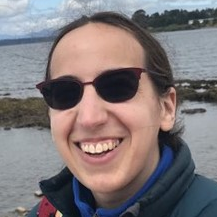Tunneling in Complex Systems
A special issue of Entropy (ISSN 1099-4300). This special issue belongs to the section "Multidisciplinary Applications".
Deadline for manuscript submissions: 31 July 2024 | Viewed by 3197
Special Issue Editors
Interests: time dependent and semi-classical quantum mechanics of molecules and devices; tunneling in complex systems, imaging of electrons in molecules, graphene, and semiconductors; classical–quantum correspondence in nonlinear dynamical systems
Interests: quantum computing algorithm development; atomic and molecular physics; ultracold chemistry and collisions; quantum reflection; PT symmetry; tensor networks; quantum dynamics
Special Issue Information
Dear Colleagues,
Quantum tunneling is a well-known fundamental effect in quantum mechanics that has become increasingly important since its first description nearly a century ago. Today its importance ranges from cold atoms and molecules to biology, chemistry, and quantum field theory. Its further development could continue to impact a wide range of applications such as quantum computing, scanning tunneling microscopy, single molecule magnets, and nanoscale devices. This Special Issue aims to bring together discussions of quantum tunneling from different fields to address the questions of what constitutes tunneling, how it relates to its counterparts such as Anderson localization and quantum reflection, in addition to generating further knowledge and innovations and highlighting what unites tunneling across disciplines.
Prof. Dr. Eric J. Heller
Dr. Micheline Soley
Guest Editors
Manuscript Submission Information
Manuscripts should be submitted online at www.mdpi.com by registering and logging in to this website. Once you are registered, click here to go to the submission form. Manuscripts can be submitted until the deadline. All submissions that pass pre-check are peer-reviewed. Accepted papers will be published continuously in the journal (as soon as accepted) and will be listed together on the special issue website. Research articles, review articles as well as short communications are invited. For planned papers, a title and short abstract (about 100 words) can be sent to the Editorial Office for announcement on this website.
Submitted manuscripts should not have been published previously, nor be under consideration for publication elsewhere (except conference proceedings papers). All manuscripts are thoroughly refereed through a single-blind peer-review process. A guide for authors and other relevant information for submission of manuscripts is available on the Instructions for Authors page. Entropy is an international peer-reviewed open access monthly journal published by MDPI.
Please visit the Instructions for Authors page before submitting a manuscript. The Article Processing Charge (APC) for publication in this open access journal is 2600 CHF (Swiss Francs). Submitted papers should be well formatted and use good English. Authors may use MDPI's English editing service prior to publication or during author revisions.
Keywords
- tunneling in thermal systems
- many-body tunneling
- tunneling time
- dynamical tunneling
- chaos-assisted tunneling
- coherent vs incoherent tunneling
- role of Planckian times
- tunneling in glassy systems
- tunneling in quantum solids like H2 below 13 K
- tunneling in molecules
- tunneling in biological systems
Planned Papers
The below list represents only planned manuscripts. Some of these manuscripts have not been received by the Editorial Office yet. Papers submitted to MDPI journals are subject to peer-review.
1. Authors: Andrei B. Klimov and Iván F. Valtierra
Tentative title: Tunneling Wigner Currents in the Hyperbolic Phase-Space
2. Authors: Daniel Martínez-Gil, Salvador Miret-Artes and Pedro Bargueno
Tentative title: The Interplay Between Tunnelling and Parity Violation in Chiral Molecules
3. Authors: Jens Poulsen and Gunnar Nyman







